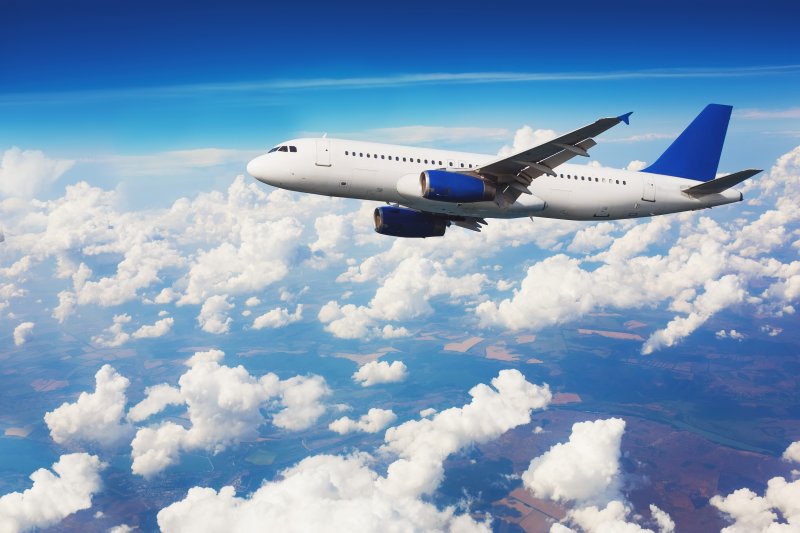Taking to the Air After Tooth Removal: What to Know About Flying After Extraction
August 13, 2024

A tooth extraction can relieve pain, prevent dental damage, and eliminate an infection at its source, but flying too soon after having one can come with a few complications. During flight, the increasing elevation and decreasing air pressure can strain or cause discomfort in the surgical area, potentially interfering with the healing process. Here’s a brief overview of the risks of flying after having a tooth extraction as well as a few tips for managing these issues.
What Are the Risks of Flying After Tooth Extraction?
After having a simple or surgical tooth extraction, it’s important to dedicate the first 24 to 48 hours to rest and relaxation so your mouth has time to heal. While you may be aware that this includes avoiding strenuous physical activity and sticking to a soft diet, you may not know how changes in air pressure can interfere with the extraction site.
As you go higher above sea level, the air gets thinner, and this shift in pressure can distress the healing blood vessels in the mouth and dislodge the clot forming over the wound. Since this can result in a severely painful condition called dry socket, it’s best to wait at least two days before flying after having a tooth removed.
What if I Absolutely Must Fly Soon After Tooth Extraction?
While it’s highly recommended that you wait for at least 48 hours after extraction before flying, there are certain circumstances where your trip cannot wait. Here are a few tips for minimizing discomfort and protecting your surgical site while flying soon after tooth extraction:
- Pack a cold compress with you to reduce discomfort
- Have any prescriptions filled before you leave and pack them in your carry-on bag
- If you were not prescribed any medication, pack over-the-counter pain relievers instead.
- Keep a room temperature bottle of water with you, as hot or cold temperatures can irritate the surgical site, causing severe pain or even dry socket
- Pack clean gauze in your carry-on if needed
- Stick to soft foods that are not very sweet, salty, sour, or spicy
- Get as much rest as possible at the airport terminal, on the plane, and when you reach your destination
- Don’t hesitate to call your dentist if you have any problems
While it’s ideal to have 48 hours of rest after a tooth extraction, this is not always possible. Knowing how to care for your surgical site while in the air can help you avoid unpleasant complications.
About the Author
Dr. Steven Oshins earned his dental degree at the University at Buffalo School of Dental Medicine and completed a two-year residency at Ellis Medicine in Guilderland, NY. He is proud to be a member of the American Dental Association, the New York State Dental Association, and the Academy of General Dentistry. His office in Schenectady offers general, restorative, cosmetic, and emergency dentistry as well as tooth extractions. To learn more about caring for your mouth after extraction, contact his office online or dial (518) 356-5635.
No Comments
No comments yet.
RSS feed for comments on this post.
Sorry, the comment form is closed at this time.
